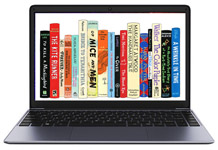
E-JASL: Electronic Journal of Academic and Special Librarianship (1999-2009, Volumes 1-10)
Date of this Version
Fall 2004
Document Type
Article
Citation
Electronic Journal of Academic and Special Libraries (Fall 2004) 5(2-3). Also available at http://southernlibrarianship.icaap.org/content/v05n02/kumbar_r01.htm.
Abstract
Introduction
Herb White, states in Library Journal, “... it should be fairly clear that librarians do not market and that they never have marketed.” He concludes, “What we need to tell people is not how wonderful our public libraries are but rather how wonderful they could be. The awakening of these dreams is the purpose of marketing” (Besant & Sharp, 2000). Since the 1960’s, the most widely taught marketing concept was the marketing mix theory: the 4Ps (product, price, place and promotion)—so clean, so neat, so inappropriate for libraries. Marketing theory cannot always be so succinctly described since relationships are by their nature complex. Marketing and Total Quality Management (TQM) are closely and clearly interlinked. Marketing focuses on capturing and analysing customers’ needs; TQM involves the question of whether products and services do correspond to customers’ expectations and needs and whether both are congruent with each other. TQM has been defined as “a systematic process which focuses on understanding customer needs and improving customer services” (Donald, 2003). The implementation of TQM in the library is a useful way to evaluate the quality of library services and provide goals for improvement. One especially beneficial aspect of TQM is its emphasis on continuous improvement.
Libraries are both a creation and a servant of society. A library operates routinely with a known set of customers. A library also operates on trust. When a client walks into the library, he trusts that he will get the material or information that he needs. The library, in turn, trusts that the client will return the items within the specified borrowing period. The specific structure of a library with its strict requirements as to efficiency demands a focus on the quality of value-adding processes. If a library is to be managed according to quality criteria, quality needs to be defined and made measurable. The indicators found must be captured in a measuring system for the sectors “cost and performance,” “customer satisfaction,” and “staff satisfaction” that facilitates quality controlling and provides staff with controlling parameters for everyday work.
The most important condition of effective library services is to support continuous enriching dialog between the library and society by agreeing upon quality targets, which relate to the maintenance or improvement of quality standards. The library staff carries the responsibility for the results of their work and for reaching the agreed targets.
Included in
Communication Technology and New Media Commons, Management Sciences and Quantitative Methods Commons, Scholarly Communication Commons, Scholarly Publishing Commons


Comments
Copyright 2004, Kumbar. Used by permission.